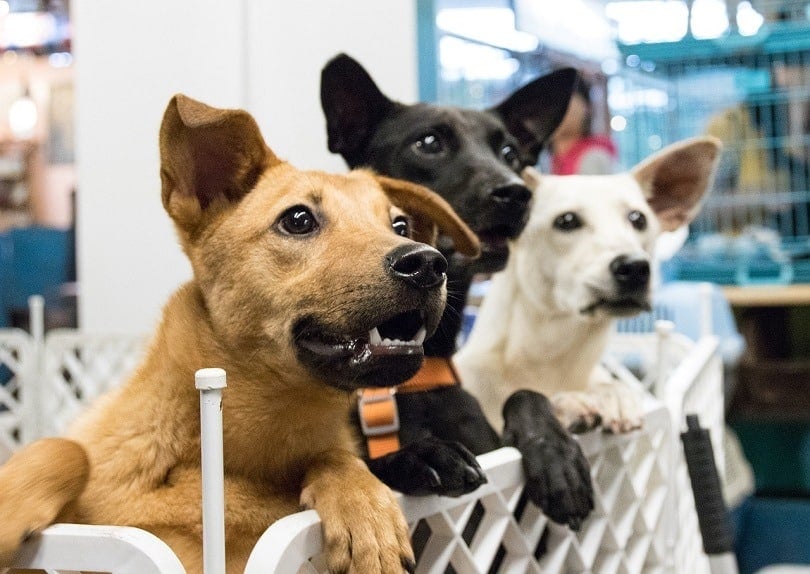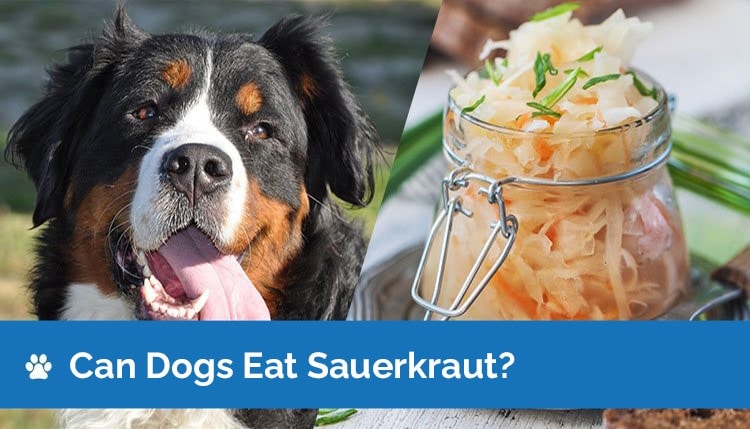Are Pitbulls Hypoallergenic? What You Need to Know!

Updated on
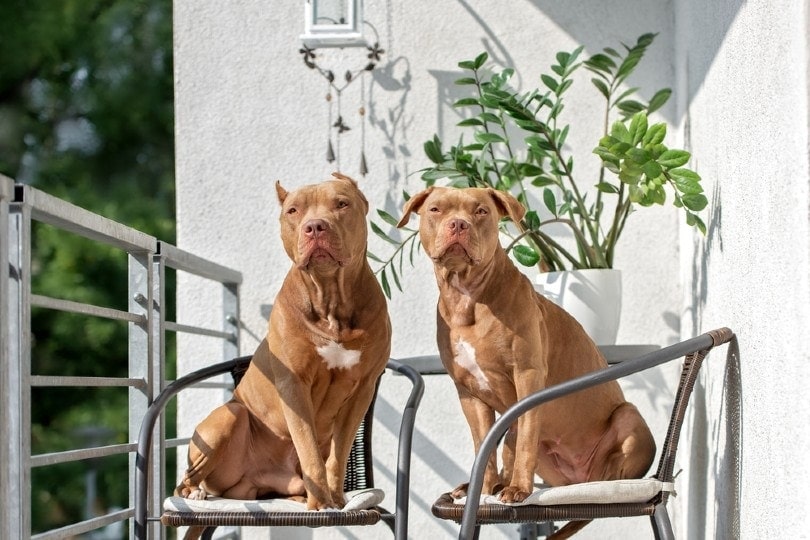
Although Pitbulls are short-haired, Pitbulls are not considered hypoallergenic and shed quite a bit. This shedding causes a lot of irritation, runny noses, and sniffles.
Keep reading to learn about why Pitbulls are not hypoallergenic and how you can reduce the chances of your pet causing an unwanted reaction. Using these tips, you can make your allergen-riddle Pit more manageable.
What Does “Hypoallergenic” Mean?
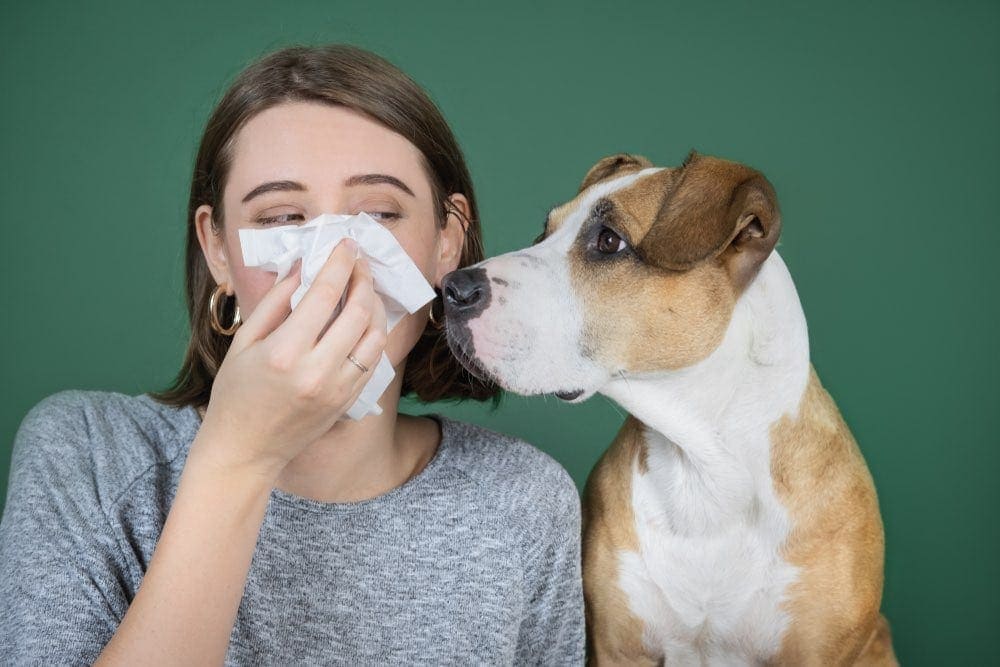
For a dog to be called hypoallergenic, it simply means that they are unlikely to cause an allergic reaction of some sort. Although you can find several breeds that claim to be hypoallergenic, there is no such thing as a completely hypoallergenic breed. Whenever a breed is classified as hypoallergenic, it simply means that it is less likely to cause a reaction in comparison to other dogs.
Typically, hypoallergenic dogs will be classified as such based on their shedding, dander, and allergens. These three factors largely determine how likely a breed is to cause allergens. The reason for this is that it is not the hair that actually causes an allergic reaction.
Instead, many allergic reactions are due to certain proteins found in the dog urine, saliva, and body. Since dogs lick themselves, frequent shedding and high amounts of dander lead to exposure to this allergy-causing protein.
Shedding
Shedding is often considered one of the biggest contributors to a breed’s hypoallergenic classification. Simply put, shedding is your dog’s natural hair loss process. Some dogs shed all year long, whereas others only shed their undercoat seasonally.
Dander
Even though shedding is an obvious sign that a dog may not be hypoallergenic, most allergic reactions are due to the pet dander, not the fur. Dander is the dead skin cells that flake off your dog’s body (or your head). Dander clings to the dog’s fur, allowing the dander to infiltrate your home during the shedding process. Consequently, dogs that shed a lot have the highest dander spread.
Allergens
As we already mentioned, urine and saliva protein are allergens for many people. Dogs that drool or have frequent accidents are more likely to cause some sort of allergic reaction. This is why some people get rashes after a dog licks them.
Potential Complications
Shedding, dander, and allergens can cause a number of adverse allergic reactions. Most notably, it can lead to a runny nose, sneezes, and red eyes. More serious reactions include sinus infections and asthma triggers. The best way to find out if your Pitbull is the exact cause for your allergic reaction is to take an allergy skin test or blood test.
Are Pitbulls Hypoallergenic?
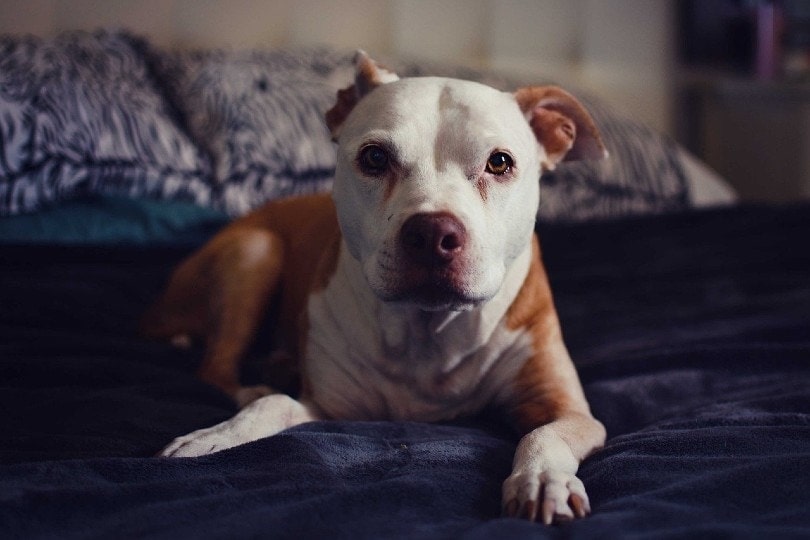
Although Pitbulls are not hypoallergenic, they certainly are not the worst breed for allergy sufferers, but they aren’t the best either. The main reason that Pitbulls are not considered hypoallergenic is that they seasonally shed their coat twice a year and they lick quite a bit.
Whenever your lovable Pitbull pooch sheds its fur, dander spreads all throughout your house. This is especially an issue since Pitbulls are incredibly touchy and like sitting as close to their owners as possible. Whenever they sit close to you during their shedding season, the dander will be right next to your body and face.
More so, Pitbulls are known to slobber quite a bit. Although they don’t drool like some larger breeds, Pitbulls are known to lick and chew very often. Many people experience adverse side effects to the protein found within their saliva.
Top Hypoallergenic Dog Breeds
Even though Pitbulls are not hypoallergenic, there are a number of other dog breeds that shed very little and have single coats.
- Afghan Hound
- Bichon Frise
- Chinese Crested
- Irish Water Spaniel
- Italian Greyhound
- Maltese
- Peruvian Inca Orchid (Hairless)
- Poodle
- Schnauzer
- Scottish Terrier
Top 7 Tips for Minimizing Pitbull Allergens
Simply incorporating some of these tips into your home can help minimize allergens and improve the air quality.
1. Groom Regularly
In comparison to many breeds, Pitbulls require very little grooming maintenance. They have short hair and do a great job of grooming themselves. If you are noticing that your Pitbull is causing a lot of allergy troubles, grooming them frequently will help the problem out a lot.
You do not need to have experience as a groomer or hire a groomer to keep up with your Pitbull. Instead, invest in a couple functional tools. Most importantly, select a brush to help control shedding. Brushing your dog twice a week will prevent hair fall out throughout your home, helping to prevent allergens from spreading.
Additionally, consider bathing your Pitbull more frequently. Most Pitbulls only need a bath once a month or so. For serious allergy sufferers, bathing your Pitbull once a week will do you a lot of good. Select a dog shampoo to thoroughly clean your Pitbulls skin and fur without irritation.
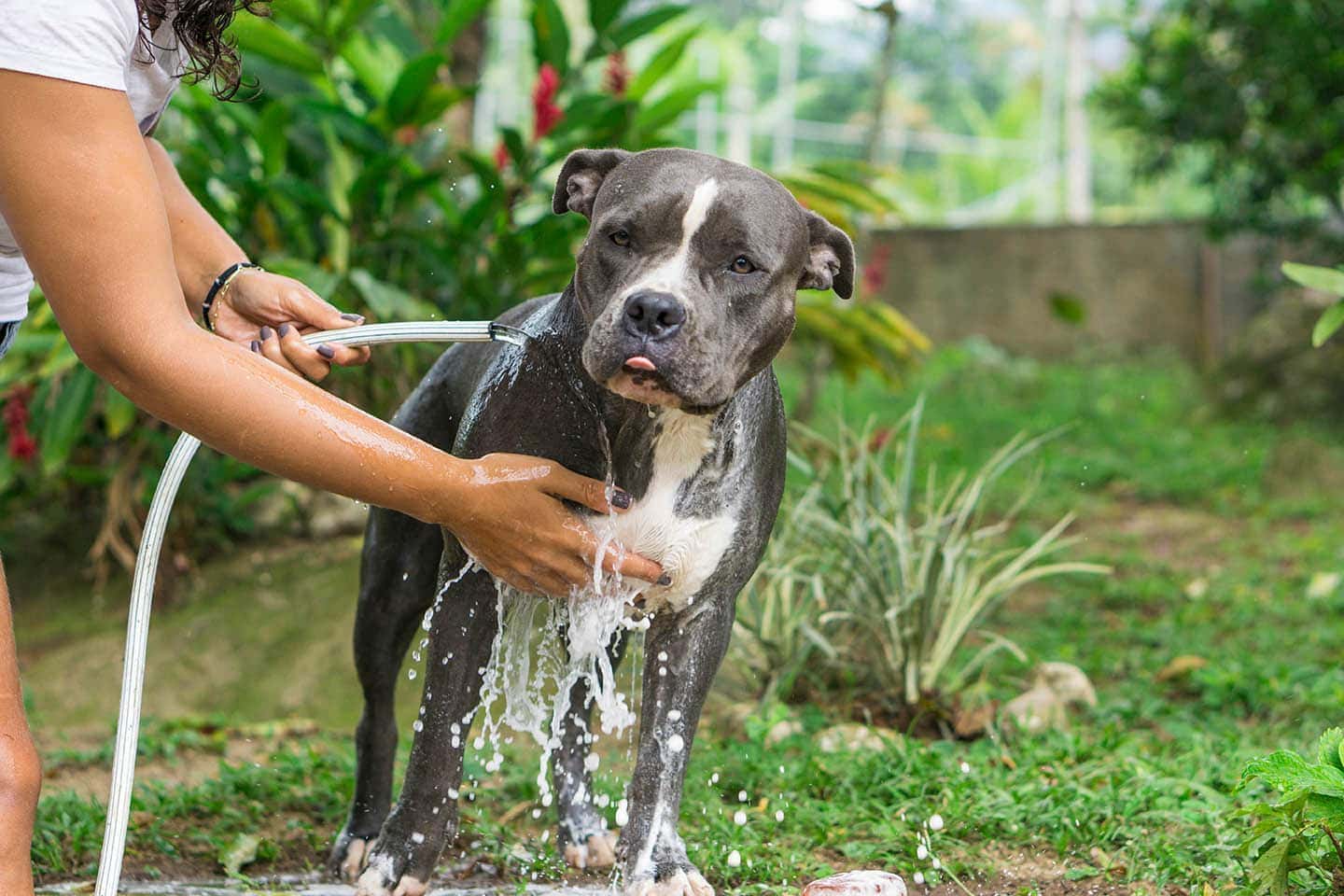
2. Wash Your Hands After Petting, Grooming, and Playtime
Make sure to wash your hands after you pet, groom, or play with your Pitbull. Even though you might not see it, your hands can spread their germs and dander, leading to more allergens down the line. Just wash your hands to prevent this from happening.
It’s also a really great idea to wash your hands after cleaning their toys or bed. The allergy-causing dander and protein will easily stick to your lovable pooch’s favorite spots.
3. Prevent Licking
Even though many people think Pitbulls are an aggressive breed, they are actually quite lovable. One of their favorite pastimes is licking their owners and guests in the home. Although this shows that they love you, it’s a rather gross form of affection. Not to mention, it causes a lot of allergy problems.
Prevent licking by training your Pitbull from doing so, especially around your face. Pitbulls are relatively easy to train with the right patience and diligence.
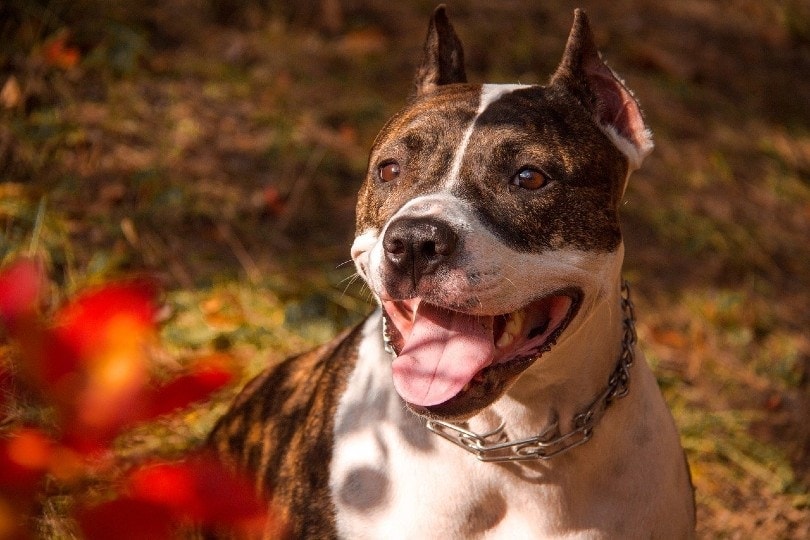
4. Clean Regularly
Just as you need to wash your Pitbull regularly, you need to clean your home regularly as well. Any place your Pitbull goes with in your home is exposed to their dander, fur, and allergens. Unless you clean your home regularly, the allergens will build up, leading to more adverse reactions.
One of the best cleaning tips is to vacuum frequently. Dog hair and dander can easily hide in your home’s carpet. Invest in a vacuum that is specifically designed for removing dog hair. This will lead to a much cleaner carpet and fewer allergic reactions.
Clean any surfaces that your dog lays or sleeps on as well. This includes a dog bed, couch, or bed. If you have severe allergies, it is wise to prevent them from sleeping on the bed or anywhere else you will be laying or sitting frequently.
5. Get an Air Purifier
Surfaces are not the only things that can harbor your Pitbull’s allergens. The air can also be filled with dander and allergens, leading to severe allergic reactions. To clean the air you breathe, get an air purifier for the rooms you most frequently use. Check recommended air purifier sizes based on each room’s dimension.
Similarly, make sure to change out your air filters more frequently. Whenever you have a dog, air filters get clogged up more frequently. This is especially true for a breed that sheds. Make sure to change the air filter just to purify the air more effectively.
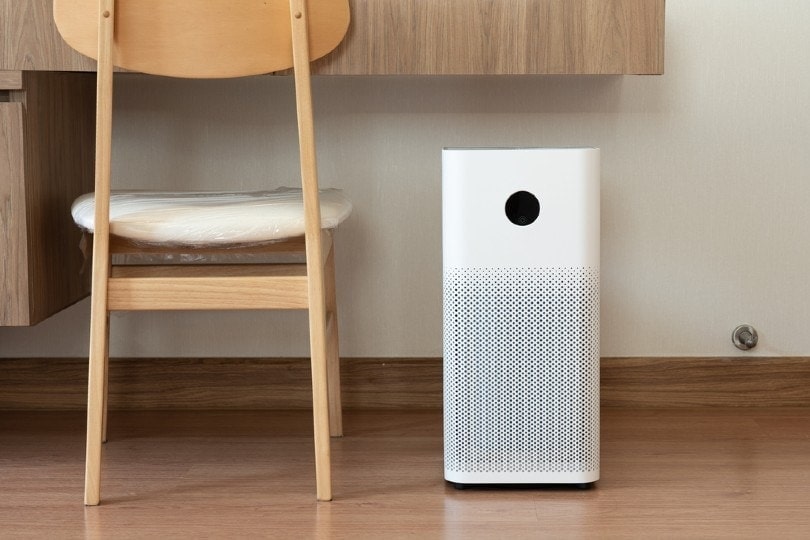
6. Change Your Pitbull’s Diet
Diet plays an important role in your dog’s health and dander formation. By feeding your Pitbull the right diet, you will notice that their hair sheds less frequently and that it looks much healthier. Generally, avoid dog foods that contain grains.
Instead, look for dog foods that are high in omega-3 fatty acids. This will reduce dry skin, leading to less dander. At the same time, omega-3 fatty acids will also treat inflammation and joint pain. Many salmon and lamb-flavored dog foods are high in omega-3 fatty acids.
7. Get Allergy Medication
When you get your Pitbull, it is a good idea to talk to your doctor about getting an allergy medication. This will offer some relief, but it will treat the symptom, not the cause. In other words, it doesn’t change the allergen levels from your dog or in your home. It simply helps you respond to them better.
You can find a number of allergy medications at a local convenience store. If these allergy medications are not strong enough, talk to your doctor for a prescription strength allergy medication instead.

Conclusion
Despite their deceptively short hair, Pitbulls are not hypoallergenic. Instead, they fall somewhere in the middle of the pack when it comes to their ability to irritate allergy sufferers. Still, allergy sufferers can find a way to live happily with their Pitbulls. If you put extra effort into their grooming and your cleaning habits, you will see a large improvement in your allergies.
See Also:
- Are Border Collies Hypoallergenic? Vet Reviewed Facts & Tips
- Are Bull Terriers Hypoallergenic? Vet-Reviewed Facts & Tips
Featured Image Credit: otsphoto, Shutterstock




